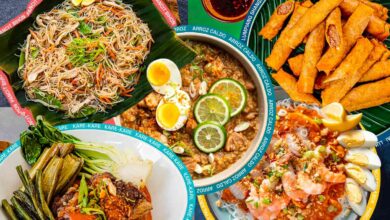
Is Cycling Becoming More Fun in the Philippines?
WHY SHOULD WE cycle, you ask? Apart from cheap transportation that gets you out of queues, among the many benefits of cycling is an increase in muscle strength and flexibility. Cycling, which became the top-of-mind mode of transport during strict lockdown enforcements in the city, is having a resurgence.
With the shortage of public transport to take us to work or essential establishments such as stores, the market, or even hospitals, people have no other option but to pedal their way to their destinations.
But as we move forward with our lives, even with the virus still present, will cycling still be our first choice for mobility, or is it just a trend?
Cycling in the Philippines
While the cycling industry in the country has long been present, more people, including the government, saw its importance in the middle of the pandemic. Take for example Iloilo. The city has been progressively turning itself into a safe place for cyclists and pedestrians alike.
READ: [Iloilo: Pedaling its way into the future]
Independent groups have also been pushing for the relevance of cycling as a mode of transport. Some have even promoted the use of it for our medical frontliners, especially during the early periods of the lockdowns. This is how Life Cycles PH was founded.
Aside from community efforts to highlight its relevance on the road, it is undeniably good for the health and most importantly, our environment.
Biking, what’s good?
Knowing how to ride a bike is a skill most learn when they’re young, and not easy to forget. That’s where the phrase, “It’s just like riding a bike” comes from. We all know how to do it, even after a long time.
But what they don’t teach us growing up is the many benefits of cycling. It helps reduce stress, increases our muscle strength, burns calories, helps increase our metabolism, and many more. It’s exercising without the strict routines some of us aren’t used to.
While biking burns up calories, it doesn’t burn the atmosphere. Obviously, it’s a pollution-free mode of transport that helps the environment breathe, especially in the city. For all we know, it could help solve traffic congestion, especially in EDSA and other urban centers in the country.
Shifting Gears
Over the months, cities have created bike lanes, and encouraged car-free weekends in notable cities to further push biking in the Philippines. However, there still are changes to be made and considerations that should be taken note of.
One of which could be the quality of the bike lanes in the city. The recommendation to use bikes for transport came rushing in, and the lack of bike lanes was the first problem encountered by our cyclists. It’s difficult and dangerous to share the road with cars and big trucks, of course.
On 3 March 2021, the House of Representatives approved a consolidated bill pushing for the establishment of a network of bicycle lanes and slow streets in the country. The success of this will create safe pathways for cyclists, wherever they are.
Aside from the development of bike lanes, let’s talk about the discipline of road sharing, especially in urban areas. The bigger mode of transport you have, the more respect is given to you. For cyclists, this mindset is putting them at risk. This has also been the woe of our motorcycle riders.
Education on road safety is important. To bring it to the forefront isn’t quite like riding a bike. It’ll take a lot more.
As we progress in our cycling culture, we should do our best to try and enjoy biking in the Philippines. Veteran Pinoy cyclists on Youtube like Ian How and Aira Lopez can help give you new perspectives, and that extra push to muster the courage and pedal.
We really hope biking doesn’t live and die as a trend. As we turn it into a larger part of our mobility and culture, let’s focus on the benefits it gives us. It should be here to stay. For a #BetterPhilippines.




